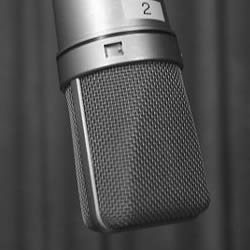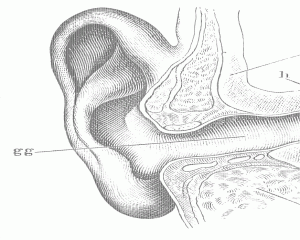Hello, 205! It’s time for the fourth entry in your audio portfolio. For this one, you’ll be responding directly to one peer in your cluster. Before you begin, you need to know who, exactly, that peer is. Ok?
Aims of the Exercise
For you to:
- Learn more about conducting peer critique through recorded audio.
- Respond constructively to your peer’s work by giving him/her suggestions for research and inquiry.
- Gain additional experience in recording and editing audio.
Constraints for Audio
- Samples from your peer’s “Found Sound” must be included
- Between three and four minutes long
- One text title (for your blog entry), but no other text (see details below)
- The audio should be left as a comment on your peer’s “Found Sound”
- Editing: whatever you wish
- Due: Tuesday, November 9th
Steps
(1) Listen (at least twice) to your peer’s “Found Sound” piece and then download it.
(2) Research his or her topic a bit more, especially if you are not familiar with it. What did your peer overlook? What is interesting about the topic? What are you learning about it? What about the topic is relevant to the 205 course material? Why should people care about it?
(3) Start composing a response. You can write it first, if you wish. Remember: the target audience is your peer and your peer only. You can treat your response like a casual, friendly conversation.
However, in your response, you must:
(1) Directly answer any questions your peer asked of you. (In so doing, sample the original “Found Sound” audio.)
(2) Point your peer to additional resources (e.g., journal articles, films, audio works, or the like). If you wish, then you can include additional audio samples that your peer did not use in her or his “Found Sound.”
(3) Help your peer integrate the 205 course material into his or her audio documentary. Here, you should make specific suggestions and reference exact names (e.g., Alcoff or Sterne) and precise concepts (e.g., keynote sound and audiovisual litany).
(4) Identify at least one thing (but preferably more) that you think your peer is overlooking or not considering. This thing can be a concept (e.g., “speaking with”), an example work (e.g., film, audio recording, or text), or a perspective (e.g., conflicting opinions on the topic). When you make this gesture, explain why it’s relevant to not only his or her audio documentary, but also the history of sound reproduction.
(5) Tell your peer what’s great about his or her idea and why you like it. Highlight what about the thought piece will make for good audio documentary material.
(4) Give your audio piece a title, which will also be the title of your blog entry.
(5) Save, export as an MP3, and upload it to the blog. Please categorize it under “re: found sound.”
(6) One extra step than per usual: Find your peer’s original “Found Sound” post and leave your “Re: Found Sound” MP3 as a comment below it. You can do this by simply copying the URL of the MP3’s location into the comment field. Don’t forget to provide your name and email address.
Outcomes
(1) “Re: Found Sound” is first and foremost about speaking with your peers through recorded audio. Your audio piece should demonstrate an awareness of who is on the other end of the transmission, despite the fact that the conversation is mediated.
(2) “Re: Found Sound” is also a form of positive force critique. That said, it should be constructive yet critical, supportive yet suggestive. It should show that, as someone who is also learning how to compose, edit, and study audio, you know that one of the best forms of learning is constructively communicating your knowledge to others.
Schedule
Your “Re: Found Sound” is due on our audio blog by the start of class on Tuesday, November 9th. The blog entry should include both a title for your audio piece and your playable MP3.  That’s it. Please categorize it under “re: found sound.†You should also leave your MP3 as a comment on your peer’s original “Found Sound.” In the comment thread, I will respond to these “Found Sound” and “Re: Found Sound” pieces on the blog.





